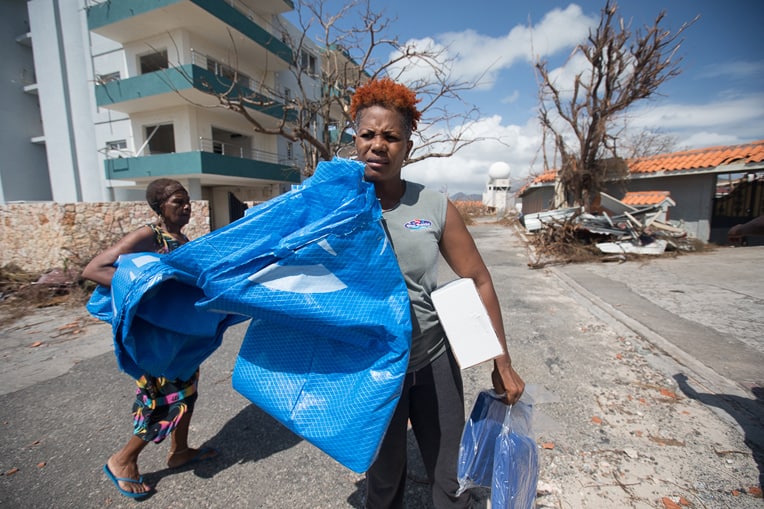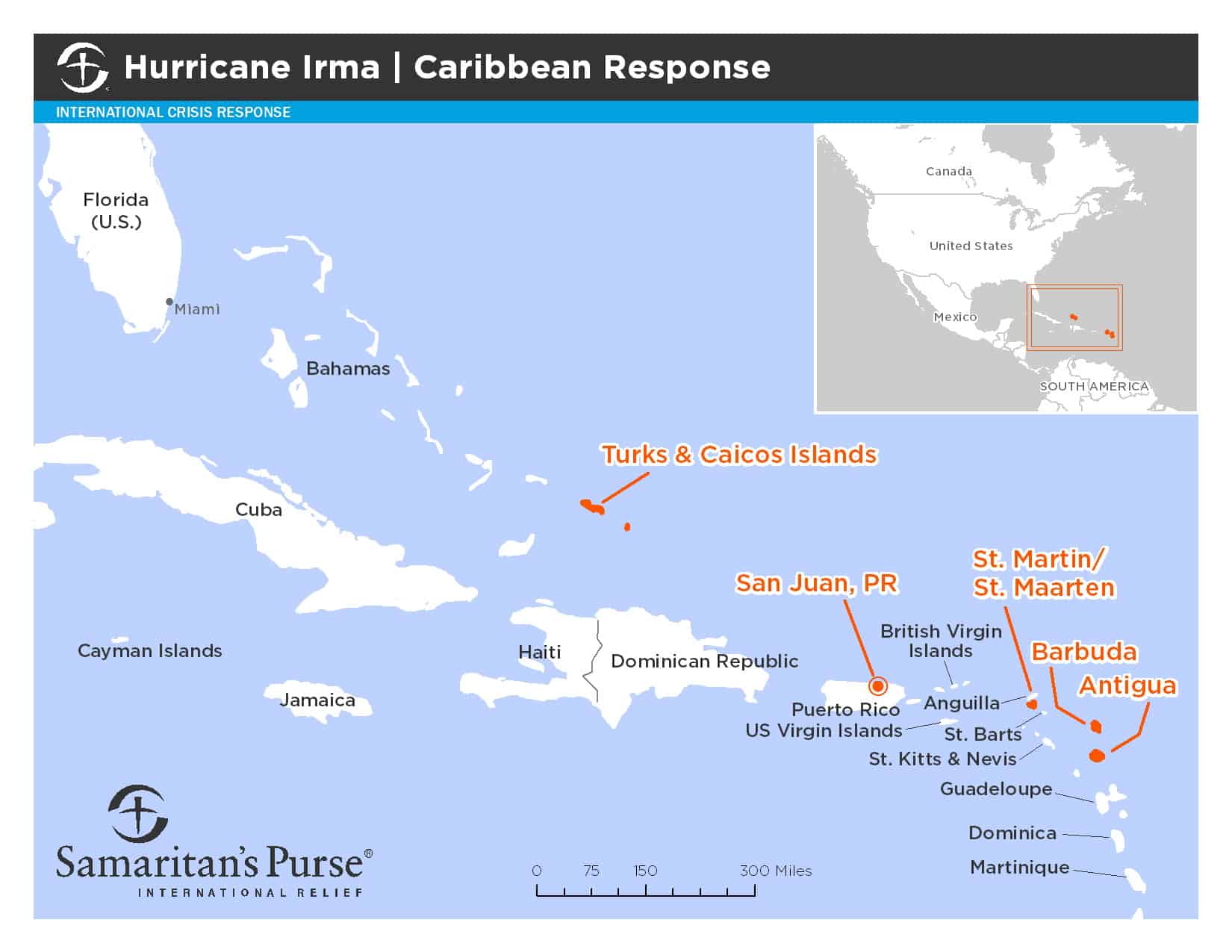Samaritan's Purse brings relief after Hurricanes Irma and Maria
DONATE NOW
Disaster Relief - 013310
Samaritan's Purse responds to humanitarian crises with physical aid and a message of spiritual hope for victims of natural disasters, famine, poverty, and war. Your gift will allow us to share Jesus' love through clean water, food, shelter, medical supplies, personnel, and other aid.
$
Samaritan’s Purse has teams across the Caribbean. We also have staff and volunteers in Florida—in Key West and other hard-hit locations.
UPDATE: After Hurricane Maria decimated Dominica and then ravaged Puerto Rico, Samaritan’s Purse has responded by sending a disaster assistance response team (DART) and emergency supplies to each island. Generators have been flown to Puerto Rico to help residents dealing without electricity—a situation that may last for many months to come.
An 18-member DART is on the ground in Puerto Rico, bringing heavy-duty shelter plastic, hygiene kits, and more generators via Samaritan’s Purse aircraft. San Juan will continue to be the logistics hub for our multinational relief response across the Caribbean. A Samaritan’s Purse team has been there for some time coordinating the Hurricane Irma response.
A 10-member DART is on Dominica and will coordinate distribution of heavy-duty shelter plastic and hygiene kits.
Read our latest article on Maria’s impact.
—
Irma left death and destruction in its wake as the storm churned through the Caribbean. Then it swamped Florida.
“Hurricane Irma leveled islands in the Caribbean and devastated the Florida coast,” said Franklin Graham, president of Samaritan’s Purse. “We are taking critically needed supplies to storm survivors and coming alongside affected families. We want to meet their physical needs while showing them the love of Christ. Please pray for all those affected by this horrific storm.”
“We are taking critically needed supplies to storm survivors and coming alongside affected families.”
—Franklin Graham
Samaritan’s Purse started its response to Hurricane Irma on the island of St. Martin, where the storm caused widespread destruction.
Our DC-8 cargo plane is making multiple trips to that island to deliver relief supplies and disaster assistance response teams. Through these airlifts—the first of which occurred on Sept. 8— we’ve brought in water purification units, heavy-duty shelter plastic, family hygiene kits, and blankets for thousands of families. We most recently flew in 30 tons of food to help residents as local supplies dwindle. Distributions are now underway.
Samaritan’s Purse is also installing equipment in St. Martin to convert seawater into clean drinking water, which has become another urgent need.

Samaritan’s Purse is on the ground in St. Martin distributing tarps, blankets, and hygiene kits among thousands of families.
We are also distributing relief supplies to the people of Antigua and Barbuda and the Turks and Caicos Islands. The expansion of our Caribbean response is possible because we’ve set up an operational hub on Puerto Rico, from where we can fly our DC-3 plane to smaller islands with airport access. We have about 30 Samaritan’s Purse personnel on the ground across several islands.
In Florida, our U.S. Disaster Relief staff and volunteers are hard at work, partnering with churches in the hard-hit areas of Key West and Naples. Our volunteers are chainsawing trees, removing debris, and tarping roofs. We will perform mud-outs in the days ahead as the waters recede. We have completed work in Apopka, north of Orlando, and in Ft. Myers.
One of the most powerful Atlantic Ocean storms in recorded history, Irma made its first landfall Sept. 6, lashing the eastern Leeward Islands as a Category 5 storm. Its 185-mph winds decimated Antigua and obliterated 60 to 90 percent of the buildings on the island of Barbuda. Gaston Browne, the prime minister of Barbuda, said the island is “literally rubble.”
After ripping up St. Martin, heavy rains and a powerful storm surge lashed Puerto Rico and the Turks and Caicos Islands. Throughout the Caribbean, Irma caused more than three dozen deaths according to the latest reports.
On Sunday, Florida felt Irma’s fury, including 105-to 130-mph winds, heavy rains, and major storm surge. The storm first hit the U.S. as a Category 4 monster in the Keys and then made a second landfall at Marco Island. Almost the entire state was affected in some way, with the southwestern coast getting the worst of it. Millions are still without power. After flooding Jacksonville; Savannah, Georgia; and Charleston, South Carolina, the storm disbanded.
This is the first time that two Category 4 storms (Harvey and Irma) have made U.S. landfall in the same year. In addition to our national and international response to Hurricane Irma, we continue to serve Hurricane Harvey victims in Texas in the Name of Jesus Christ.
DONATE NOW
Disaster Relief - 013310
Samaritan's Purse responds to humanitarian crises with physical aid and a message of spiritual hope for victims of natural disasters, famine, poverty, and war. Your gift will allow us to share Jesus' love through clean water, food, shelter, medical supplies, personnel, and other aid.
$
You can also make a donation by phone or mail:
Phone:
+1-800-663-6500 (Monday through Friday; 8:00 a.m. to 4:30 p.m. Mountain time)Mail:
Samaritan's Purse Canada20 Hopewell Way NE
Calgary, Alberta, T3J 5H5
Hurricane Irma updates


